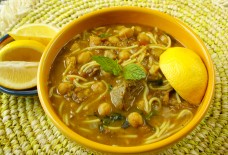Sponsored Post: Exploring the Arab Legacy in the Philippines
For Arab Americans, the Philippines presents an ideal destination to explore a new culture, as well as their own. This article delves into the historical ties between the Arab world and the Philippines, the current role of Muslim culture in the archipelago, the travel registration declaration and practical travel advice for those journeying from the US.
The Arab Community in the Philippines
The Arab influence in the Philippines dates back to the pre-colonial era. Arab traders and missionaries first arrived in the Philippines in the 14th century, primarily in the Sulu Archipelago and Mindanao. They played an important role in introducing Islam to the region, significantly shaping the cultural and religious landscape.
Arab and Malay merchants who followed Southeast Asian trade routes introduced Sunni Islam, infused with various Sufi traditions. Spanish colonizers called the Filipino Muslims “Moros,” a derogative term they used for the Muslims (Moors) they had encountered in Spain and North Africa.
Despite this, the Filipino Moros successfully resisted Spanish conquest for centuries. It wasn’t until the mid-19th century, with the advent of advanced gunboats, that the Spanish were able to establish a permanent presence in Muslim-dominated areas.
In Filipino Muslim culture, the term “Moro” has come to symbolize resistance more than religious identity. This spirit of defiance is reflected in the term “Bangsamoro” (“Moro Nation”), used by modern separatist groups to represent their community.
Over time, intermarriages between Arabs and locals led to the integration of Arab culture into Filipino society. This blend is most evident in the southern parts of the Philippines, where Islamic traditions have melded seamlessly with local customs.
Muslim Culture in Contemporary Philippines
Today, the Muslim community, including those of Arab descent, forms a vibrant part of Filipino society. While the largest concentration of Muslims resides in Mindanao, Arab influences are noticeable in various aspects of Filipino culture, from cuisine to language.
The predominantly Muslim ethnolinguistic groups of the Philippines are the Iranun, Jama Mapun, Kalagan, Kalibugan, Maguindanao, Maranaw, Molbog, Sama (including the Badjao, Balanguingui, and various Tawi-Tawi Sama groups), Sangil, Tausūg, and Yakan.
The Muslim population in the Philippines comprises about 11% of the total population. Islam is practiced by nearly 5% of Filipinos.
Festivals like Eid al-Fitr and Eid al-Adha are celebrated just like anywhere else. Ramadan is also a significant time for Filipino Muslims as it is a time of fasting, prayer, and spiritual reflection.
During this month, Filipino Muslims abstain from food, drink, and other physical needs from dawn until sunset.
They wake up early to have a pre-dawn meal called “sahur.” After that, they perform the first prayer of the day called “Fajr.” In the evening, they break their fast with an “iftar” meal, which typically consists of dates and water. Later, they can have a more substantial meal. After iftar, Muslims perform the Maghrib prayer, followed by the Tarawih prayer.
In addition to these rituals, Filipino Muslims carry out acts of charity and goodwill. Some communities organize communal meals for those who are less fortunate. In truth, fairly similar to how most Muslims celebrate Ramadan in the rest of the world.
Meanwhile, traditional clothing and attire vary among different Muslim groups in the Philippines, such as the Maranao, Maguindanao, Tausug, and Yakan.
For men, the traditional attire often includes the following elements:
1. Malong or tubular skirt: This is a versatile piece of cloth worn around the waist and can be used as a skirt, head covering, or even a blanket.
2. Kandura or Barong Tagalog: This is a long-sleeved shirt made of lightweight fabric, often white or light-colored, worn over pants.
3. Sarong or Sambal: A sarong is a large piece of cloth wrapped around the waist and secured with a belt. It is commonly worn by older men.
For female Filipino Muslims, traditional attire typically includes:
1. Hijab or headscarf: This is a head covering worn by Muslim women to maintain modesty. It can be styled in different ways.
2. Abaya or jilbab: This is a loose-fitting, full-length gown worn over regular clothing to cover the body.
3. Baju kurung or malong: These are loose-fitting, long-sleeved blouses worn over long skirts or pants.
The choice of clothing can also be influenced by personal preferences, regional customs, and occasions.
Traveling from the US to the Philippines: What Arab Americans Need to Know
For Arab Americans planning a trip to the Philippines, understanding the travel requirements is essential. Here’s a concise guide:
1. Visa Requirements: US citizens can enter the Philippines without a visa for stays of up to 30 days. For longer stays, a visa must be obtained from the Philippine Embassy or Consulate before travel.
2. Travel Documents: Ensure your passport is valid for at least six months beyond your stay. Keep copies of your travel documents in case of loss or theft.
3. Health Precautions: Stay updated on vaccinations recommended by the CDC, and consider health insurance that covers international travel.
4. Cultural Sensitivity: While the Philippines is known for its hospitality, it’s important to respect local customs and traditions, especially in predominantly Muslim areas.
5. Safety Tips: Stay informed about the local situation in certain regions, particularly in Mindanao, and follow travel advisories from the US Department of State.
Conclusion
For Arab Americans, a journey to the Philippines is not just a vacation; it’s a voyage into a part of their ancestral legacy. The archipelago offers a unique glimpse into the historical and cultural ties that bind the Arab world and the Philippines.
The Philippines offers a range of experiences, from the busy streets of Manila to the serene mosques of Mindanao.
Please note that this post was paid for by a third-party and does not necessarily reflect the views of Arab America or its employees. These posts help allow Arab America to produce our wonderful original content, thanks for your understanding.
Don’t forget to check out Arab America’s blog!



